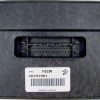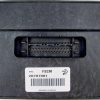Restore Your Vehicle’s Power and Reliability
Is your Silverado, Sierra, or Tahoe stumbling, stalling, or refusing to start? A failing Fuel System Control Module (FSCM) can disrupt your vehicle’s performance, leaving you with a frustrating and unreliable ride. This direct-replacement module is the definitive solution, engineered to restore precise fuel delivery and get you back on the road with confidence. Best of all, it arrives at your door completely programmed to your vehicle’s specific VIN, eliminating the need for an expensive trip to the dealership. This is a true plug-and-play fix designed for the modern vehicle owner.
Common Symptoms & Your Direct-Fit Solution
If you’re experiencing any of the following issues, a faulty FSCM is the likely culprit. This module is designed to resolve these problems by restoring communication between your vehicle’s computer and the fuel pump. Watch for a Check Engine Light with diagnostic trouble codes (DTCs) such as P069E, P0230, or P0606. This Programmed Fuel System Control Module 20850927 is your all-in-one fix.
- ✔ VIN-Programmed for You: We flash the module with the latest GM software using your vehicle’s VIN. This ensures perfect compatibility and function right out of the box, saving you hundreds in dealer programming fees.
- ✔ Eliminate Stalling & No-Starts: By restoring correct voltage to the fuel pump, this module corrects the fuel pressure issues that lead to engine hesitation, stalling, and failures to start.
- ✔ Restore Lost Power: A properly functioning fuel system is critical for engine performance. This module ensures your engine gets the precise amount of fuel it needs, restoring lost horsepower and acceleration.
- ✔ Direct-Fit Installation: Engineered to match the original factory part for a seamless installation. Simply unplug the old module and plug this one in.
- ✔ Broad GM Compatibility: Replaces a wide range of original part numbers, including 20850927, 20791901, 20827745, and 20877116, for a perfect fit on dozens of GM trucks and SUVs.
- ✔ Guaranteed Performance: This unit is backed by our one-year replacement warranty.
An Expert’s Insight on FSCM Failure
As a technician with over two decades of experience, I’ve seen countless of these modules fail. On most GM trucks and SUVs, the FSCM is mounted to the frame rail, directly exposed to the elements. Over the years, water, road salt, and debris cause corrosion on the module’s housing and, more importantly, its electrical connector. This corrosion leads to intermittent signals, voltage drops, and eventually, complete failure. When we provide you with this Programmed Fuel System Control Module 20850927, we recommend applying a thin layer of dielectric grease to the connector pins upon installation. It’s a simple, two-minute step that can add years to the life of the connection and prevent future headaches.
Frequently Asked Questions
Why do I need to provide my VIN?
Your vehicle’s Vehicle Identification Number (VIN) allows us to load the exact, factory-correct software and calibrations for your specific engine, transmission, and emissions equipment. This makes the Programmed Fuel System Control Module 20850927 a true plug-and-play part, requiring no further dealer intervention.
Is any additional programming needed after installation?
No. The module arrives fully programmed and ready for installation. Once you connect it, your vehicle’s computer will recognize it, and you will be ready to go. There are no extra steps or tools required.
Where is this module located on my Silverado or Tahoe?
On most GM trucks and full-size SUVs like the Silverado, Sierra, Tahoe, and Yukon, the Fuel System Control Module is typically mounted on the driver’s side frame rail, often near the spare tire.
What are the signs of a failing FSCM?
Common symptoms include the engine cranking but not starting, stalling while driving (especially under load), a check engine light with fuel-related codes (like P069E), rough idling, and poor acceleration. These issues are often intermittent at first and worsen over time.
Can I install this part myself?
Yes, this is a very common DIY repair. It typically involves removing a few bolts and disconnecting a single electrical connector. Basic hand tools are usually all that is required, making it a straightforward job for a home mechanic.



